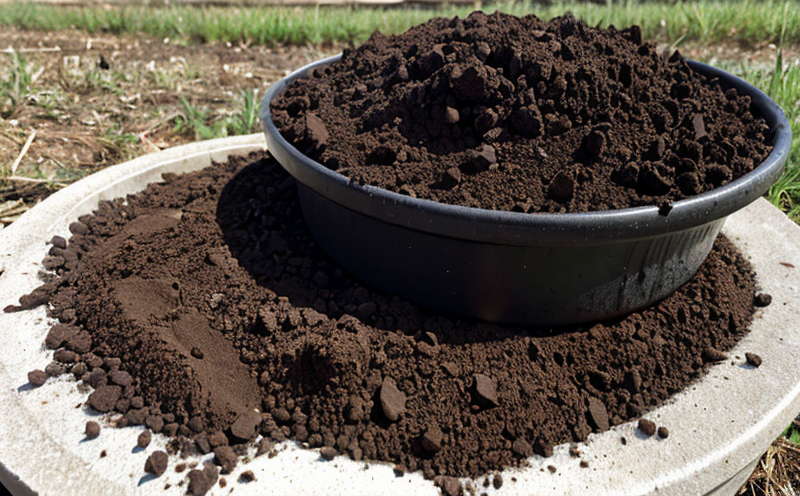EN 16202 Fluoride in Leachates from Waste Facilities
The European Standard EN 16202 outlines a method for determining fluoride concentrations in leachate samples derived from waste facilities. This standard is crucial for ensuring the environmental compliance and safe disposal of hazardous waste, particularly those containing fluorides which can have detrimental effects on water quality.
Fluoride contamination in leachates poses significant risks to aquatic ecosystems and human health when improperly managed or released into the environment. The European Commission has emphasized the importance of standards like EN 16202 to mitigate these risks by providing a standardized procedure for accurate measurement, thereby supporting sustainable waste management practices.
The standard specifies the use of ion-selective electrodes (ISE) and atomic absorption spectroscopy (AAS) as primary analytical methods. ISE is favored for its simplicity and rapidity, while AAS offers higher sensitivity and accuracy. Both methods are validated under strict conditions to ensure reliable results. The procedure involves several critical steps: sample collection, filtration, digestion, and subsequent analysis.
Accurate measurement of fluoride levels in leachates helps waste management facilities comply with regulatory standards set by environmental agencies across Europe. Compliance not only prevents fines but also enhances the facility's reputation as a responsible steward of the environment. Moreover, consistent adherence to such standards can lead to improved operational efficiency and reduced risk of contamination.
The testing process begins with the collection of representative leachate samples from waste facilities. These samples should be stored under controlled conditions to avoid degradation or alteration before analysis. The use of appropriate filtration methods ensures that only soluble fluoride ions are measured, avoiding interference from insoluble compounds. Digestion steps may involve acidification and heating to enhance the dissolution of fluoride compounds.
Once prepared, the samples undergo rigorous analysis using either ion-selective electrodes or atomic absorption spectroscopy. Each method has its advantages: ISE provides quick results but requires calibration with standard solutions; AAS offers higher precision but demands more time for setup and operation. Both methods must be conducted in accordance with EN 16202 to ensure accuracy.
The standard also includes detailed instructions on the handling of analytical reagents, quality control measures, and data interpretation. Quality control involves regular calibration checks and duplicate sample analyses to verify results. Data interpretation focuses on setting thresholds for acceptable fluoride concentrations based on environmental standards like those outlined in ISO 19243 for waste facilities.
Understanding the implications of fluoride contamination is paramount for quality managers, compliance officers, and R&D engineers. By ensuring strict adherence to EN 16202, these professionals can minimize risks associated with leachate disposal while contributing to broader environmental protection efforts.
Industry Applications
| Application Area | Description |
|---|---|
| Landfill Management | Monitoring fluoride levels in landfill leachates helps ensure compliance with environmental regulations and protects nearby water bodies. |
| Hazardous Waste Treatment Facilities | Standardized testing procedures like EN 16202 are essential for assessing the impact of waste treatment processes on local ecosystems. |
| Mining Operations | The leachate from mining activities often contains high levels of fluoride; regular testing is necessary to manage environmental risks effectively. |
| Recycling Facilities | Recycled materials may contain fluoride-bearing compounds, necessitating thorough analysis to prevent contamination in end products. |
The application of EN 16202 extends beyond mere compliance; it plays a pivotal role in advancing waste management practices. By providing accurate and reliable data on fluoride concentrations, this standard enables facilities to implement targeted mitigation strategies. For instance, mining operations can adjust leachate treatment processes based on test results, thereby minimizing environmental impact.
Landfill managers can use these data points to optimize waste management protocols, ensuring that only low-fluoride materials are released into the environment. Recycling facilities benefit from precise fluoride testing in identifying and segregating contaminated batches before processing.
Quality and Reliability Assurance
The reliability of EN 16202 lies in its rigorous validation process, which ensures consistent and accurate results across different laboratories. Laboratories accredited to this standard undergo regular audits and proficiency testing programs to maintain high standards of performance.
A critical aspect of quality assurance is the traceability of measurement results to international standards such as ISO/IEC 17025 for laboratory accreditation. This ensures that all test findings are comparable and internationally recognized, facilitating smoother cooperation between laboratories across Europe and beyond.
Quality control measures include regular calibration checks using certified reference materials (CRMs). CRMs provide a stable and reproducible basis for calibrating instruments, ensuring accurate fluoride measurements even under varying conditions. Additionally, the use of duplicate samples further enhances data reliability by reducing variability in results.
Data interpretation forms another cornerstone of quality assurance. Analysts must carefully evaluate raw data against predefined thresholds established by environmental regulations. This process ensures that all test results are interpreted correctly and reported accurately to stakeholders.
Regular participation in proficiency testing programs is mandatory for laboratories adhering to EN 16202. These programs provide an independent assessment of a laboratory’s analytical capabilities, highlighting areas for improvement and reinforcing confidence in the quality of services offered.
Competitive Advantage and Market Impact
Compliance with EN 16202 offers significant competitive advantages for waste management and recycling facilities. By demonstrating strict adherence to this standard, these entities can differentiate themselves from competitors, showcasing their commitment to environmental stewardship.
This commitment translates into enhanced reputation among clients and stakeholders, fostering long-term business relationships based on trust and reliability. Moreover, compliance helps secure contracts with environmentally conscious clients who prioritize sustainability in their supply chains.
The standard also facilitates smoother interactions between waste management facilities and regulatory bodies, reducing the likelihood of costly non-compliance penalties. Early adoption of EN 16202 can position a facility as an industry leader, attracting investment and recognition for its innovative practices.
In terms of market impact, compliance with this standard opens doors to international markets where environmental standards are stringent. It also enables facilities to participate in green initiatives and certification programs that emphasize sustainable waste management.





